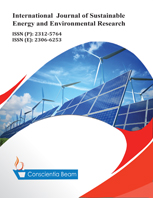Seasonal Wildfire Outbreak Trend and its Consequences on Forest Biodiversity and the Environment: A Case Study of Sierra Leone
DOI:
https://doi.org/10.18488/journal.13.2021.102.69.84Abstract
Sierra Leone is classified as a high wildfire risk country with a weather that support 50% chance of igniting wildfire especially from January to March each year. Wildfire outbreak in Sierra Leone has been having ecological, economic and health impacts on people and the environment over the years. This case study explores Sierra Leone’s wildfire outbreak trend, distribution, status, causes and consequences on biodiversity & the environment and proposed the way forward in tackling wildfire ignition, prevention and control methods in the near future. The daily active fire data from November 2000 to December 2019 were acquired from NASA MCD14DL product. Centroid vectors of fire events in 1 km by 1 km pixel were counted to give the total number of fire events in different administrative regions. Data was imported into the R Studio, version 4.0.3 from 2000-2019 for visualization and other graphical representation. The results show that the north-west and south-west experiences more wildfire incidence than other regions in Sierra Leone hence affecting the natural ecosystem. January to March was detected as the most wildfire prone months especially in the northern part of Sierra Leone. The results suggest that topography; climatic pattern and vegetation type has been considered a strong factor in influencing wildfire ignition over the years. The study concludes that the outdated 1924 fire prevention and control Act and climate change uncertainties are partially responsible for the frequent wildfire outbreak across Sierra Leone.

